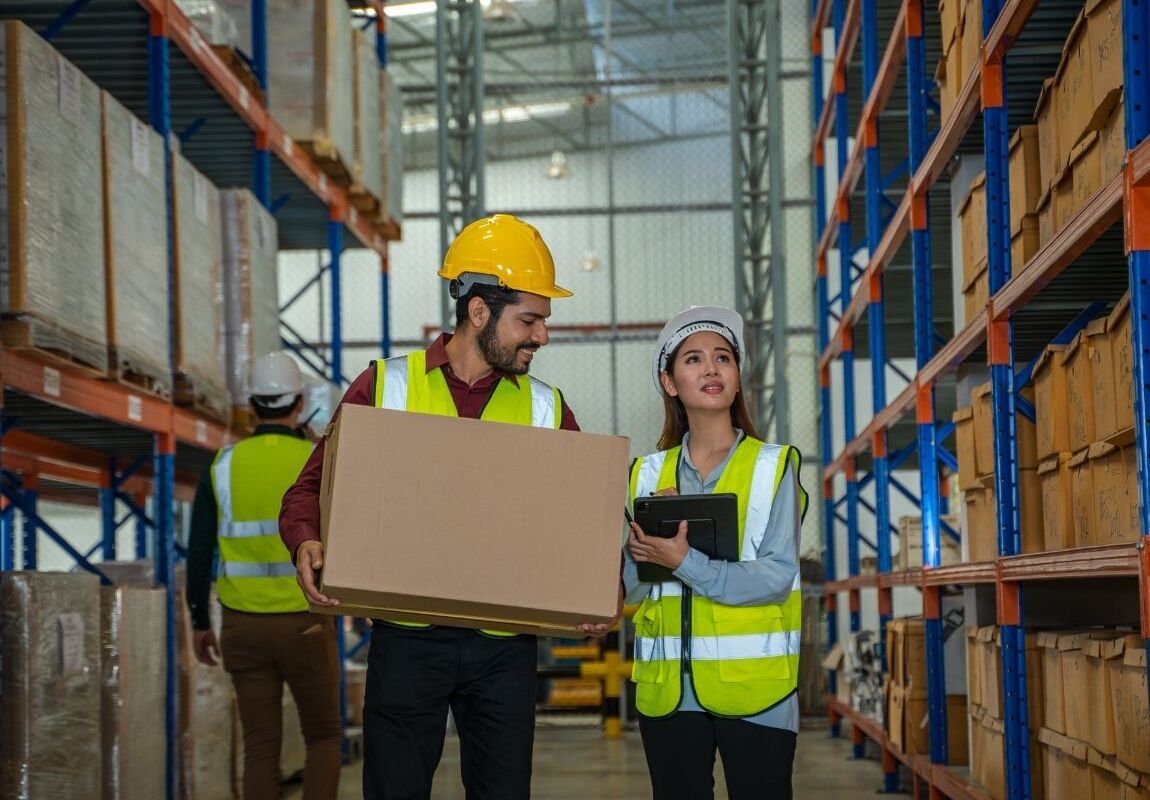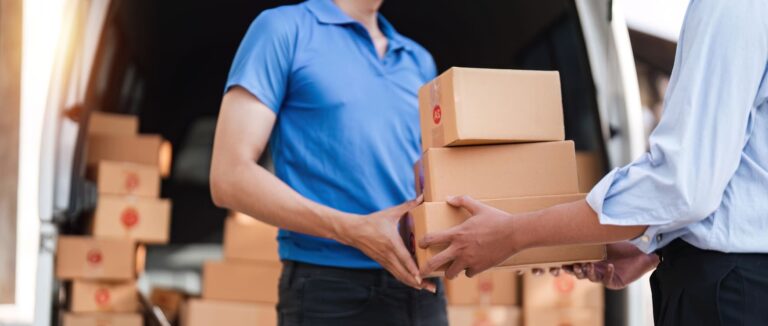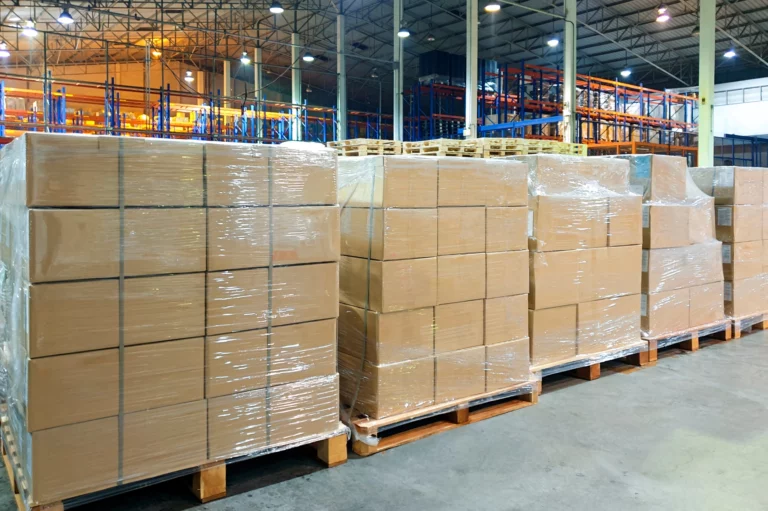Micro Fulfillment Centers: Accelerating Urban & Local Order Delivery

E‑commerce has exploded in recent years, and consumers expect rapid delivery of everything from groceries to electronics. Traditional distribution centers, often hundreds of thousands of square feet, were designed for bulk storage and nationwide shipping, not for orders that must arrive within hours. To meet rising expectations, retailers and logistics providers are deploying micro fulfillment centers (MFCs): small, highly automated facilities located close to customers. MFCs act as “pick‑and‑pack” hubs; they hold a few days’ worth of fast‑moving inventory and leverage software automation to optimise order processing. By situating inventory in urban or suburban neighborhoods, businesses can cut transit times, offer same‑day delivery and reduce costs.
What Are Micro Fulfillment Centers?
Definition and size. A micro fulfillment center is a compact storage and order‑processing facility designed to improve last‑mile delivery. Unlike traditional warehouses that span 300 000 ft² or more, MFCs typically occupy 3 000–10 000 ft² or, in some implementations, up to 20 000 ft². Their compact footprint allows them to fit into existing retail stores, unused basements or stand‑alone urban facilities. Because they store only finished goods for immediate shipment, MFCs usually hold 24–48 hours of inventory and rely on frequent restocking.
Location. MFCs are strategically placed near high‑demand areas-dense city neighborhoods, suburbs or even within grocery stores. The goal is to reduce the distance between inventory and end customers. Urban MFCs minimize driving distances and enable bike or electric van deliveries, improving sustainability. Businesses without their own urban facilities can partner with local 3PL warehouses to access a network of micro fulfillment hubs without major capital investment.
Purpose vs. traditional warehouses. Traditional distribution centers focus on bulk storage and often serve multiple regions, resulting in 2–5‑day delivery windows. MFCs, by contrast, focus on speed and proximity. Their small size and automation enable them to pick SKUs in seconds and dispatch orders within hours. This difference helps retailers compete with giants like Amazon without building massive facilities.
Why Micro Fulfillment Is Rising in Popularity
Several trends are driving the adoption of micro fulfillment:
- Consumer expectations for speed: Same‑day delivery has become the norm in many product categories. By storing inventory near customers, MFCs reduce shipping zones and transit times.
- Cost reduction: Operating small, automated facilities lowers labour and real‑estate costs compared with large warehouses. Consolidated bulk replenishment also reduces transportation expenses.
- Environmental benefits: Shorter delivery routes cut fuel consumption and last‑mile emissions, especially when combined with electric vehicles or bicycles.
- Competitive advantage: Providing next‑day or same‑day delivery increases customer satisfaction and sales. Many grocery chains (e.g., Walmart and Kroger) and retailers such as Target have implemented urban MFCs to meet demand.
- Technological maturity: Advanced robotics, autonomous mobile robots (AMRs), automated storage and retrieval systems (AS/RS) and AI‑driven warehouse management systems make small facilities efficient and accurate.
Types of Micro Fulfillment Centers
- Urban fulfillment centers: Located in densely populated areas, these facilities enable rapid order fulfillment and reduce delivery distances. They support same‑day delivery and curbside pickup, benefitting omnichannel retailers.
- Suburban or local fulfillment centers: Situated near residential neighborhoods or in existing stores, they serve as pick‑up points and mini distribution hubs. They reduce lead times and lower shipping costs for retailers without urban real estate.
- Dark stores and third‑party micro hubs: Some MFCs operate as “dark stores,” closed to shoppers but open to pickers. Third‑party logistics (3PL) providers often run these micro hubs, allowing brands to outsource fulfillment without building their own infrastructure.
How Micro Fulfillment Centers Operate
The workflow in a micro fulfillment center is highly automated:
- Receiving & put‑away: Inventory arrives in bulk and is checked for accuracy, then placed into storage bins or shelves using robotic shuttles or conveyors.
- Storage & inventory management: A warehouse management system tracks inventory locations and triggers replenishment when stock levels drop. Advanced AI forecasts demand to position fast‑moving SKUs near pick stations.
- Picking: When a customer places an order, automated storage systems or AMRs retrieve the items and deliver them to a pick station. Voice‑directed or pick‑by‑light systems further streamline the process, enabling pickers to assemble orders quickly.
- Packing & handoff: Orders are packed for delivery or curbside pickup. Integration with last‑mile carriers or in‑house delivery fleets ensures packages reach customers within hours.
These processes are supported by technologies such as robotics, AI, warehouse management systems and Internet of Things (IoT) devices, which monitor conditions and optimise throughput.
Advantages of Micro Fulfillment Centers
| Advantage | Description & evidence |
|---|---|
| Faster order processing | Automation allows MFCs to pick SKUs in seconds, reducing manual labour and error. |
| Same‑day and next‑day delivery | Proximity to customers shortens delivery routes and enables fast shipping. |
| Lower operating costs | Compact facilities require less labour and real estate; bulk replenishment reduces transport costs. |
| Space efficiency | MFCs maximise throughput per square foot by using vertical storage and automation; they can be installed within existing retail spaces. |
| Scalability & flexibility | Retailers can open multiple MFCs in high‑demand areas instead of building a single large warehouse, enabling scalable growth. |
| Omnichannel support | MFCs enable home delivery, curbside pickup, click‑and‑collect, and in‑store fulfillment from the same location. |
| Sustainability | Shorter delivery distances and electric or bicycle deliveries cut emissions. |
Challenges and Considerations
While MFCs offer many benefits, they’re not a one‑size‑fits‑all solution:
- Limited storage capacity: MFCs hold only 24–48 hours of inventory and must be replenished frequently. Businesses need robust inventory planning and just‑in‑time restocking systems.
- Dependence on demand patterns: Because inventory is limited, sudden surges in demand (e.g., viral social media posts) can cause stock‑outs and disappointed customers.
- Location sensitivity: Choosing the wrong location negates the advantages; shifting customer demographics may require relocating or adding new sites.
- Automation investment: Implementing robotics, software and conveyor systems requires significant upfront capital. Small businesses may opt to partner with local 3PL providers instead.
- Not suitable for all SKUs: Bulky or slow‑moving items (e.g., furniture) are difficult to store and pick in small, automated facilities.
- Operational complexity: Running multiple micro hubs increases complexity in inventory management, labour scheduling and technology integration.
Micro Fulfillment vs Traditional Warehousing
| Feature | Traditional distribution center | Micro fulfillment center |
|---|---|---|
| Typical location | Suburban/outskirt areas; serves multiple regions | Urban or suburban neighborhoods, close to customers |
| Size | 300 000–1 000 000 ft² or more | 3 000–20 000 ft² |
| Inventory duration | Weeks to months | 24–48 hours |
| Automation level | Moderate; relies on manual labour | High; uses AS/RS, AMRs, robotics, AI and WMS |
| Delivery speed | 2–5 days | Same‑day or next‑day |
| Operational focus | Bulk storage and regional distribution | Rapid e‑commerce and grocery fulfillment |
| Capital investment | Requires large land purchase and extensive build‑out | Smaller footprint but high investment in automation; can be outsourced to 3PLs |
Micro fulfillment adoption is expected to accelerate as e‑commerce volumes rise and technology costs fall. Advancements in robotics, artificial intelligence and augmented reality picking will make MFCs more efficient and affordable. By bridging the gap between regional warehouses and the end consumer, micro fulfillment centers, whether owned or operated by a local 3PL, are poised to become a standard part of urban logistics.
Accelerate Same-Day Delivery with Micro Fulfillment & Local 3PL Partnerships
Businesses looking to offer same‑day delivery without building massive distribution centers should explore micro fulfillment and local 3PL partnerships. Olimp Warehousing can help you assess your market, select the right micro‑fulfillment strategy and integrate automation technologies. Contact our team to learn how we can accelerate your order delivery and improve customer satisfaction.
Frequently Asked Questions (FAQ) – OLIMP Warehousing
Q: What is a micro fulfillment center?
A micro fulfillment center is a compact, highly automated warehouse located close to customers. It stores a few days’ worth of finished goods and uses robotics and software to pick and pack orders quickly. Unlike large distribution centers, MFCs focus on last‑mile delivery and enable same‑day shipping.
Q: How do micro fulfillment centers differ from traditional warehouses?
Traditional warehouses are massive facilities (hundreds of thousands of square feet) designed for bulk storage and regional distribution. Micro fulfillment centers occupy 3 000–20 000 ft², store only fast‑moving items and rely on automation for rapid picking and packing. They are usually located in urban or suburban areas, allowing same‑day delivery.
Q: What technologies power micro fulfillment centers?
MFCs use automated storage and retrieval systems (AS/RS), autonomous mobile robots (AMRs), conveyor systems, voice‑directed and pick‑by‑light solutions, augmented‑reality vision picking and AI‑driven warehouse management systems. These technologies coordinate to move inventory, pick items and optimize routes.
Q: How do local 3PL warehouses support micro fulfillment?
Partnering with a local third‑party logistics provider allows businesses to leverage an existing network of micro fulfillment hubs without heavy capital investment. The 3PL manages automation, inventory replenishment and last‑mile delivery, while retailers focus on sales and customer service. This is ideal for smaller brands or those testing urban fulfillment strategies.
Q: What does MFC stand for at Walmart?
At Walmart, MFC stands for “Market Fulfillment Center.” It’s a compact, modular warehouse built within or adjacent to a store. These centers use automated bots to retrieve items, store thousands of popular products (including fresh and frozen goods) and assemble orders quickly, allowing customers to pick up or receive deliveries within an hour.
Q: What is the difference between micro fulfillment and a dark store?
A dark store is a retail space closed to customers and dedicated to picking online orders; employees or simple picking systems fulfill orders in aisles arranged for efficiency. A micro‑fulfillment center is a smaller, tech‑focused warehouse (often integrated into existing stores) that uses automation (robots, AI‑driven pickers, etc.) to rapidly pick and pack orders. Dark stores rely more on manual picking, whereas MFCs deploy advanced automation and can serve both online orders and in‑store pickup.
Q: What is Walgreens’ micro fulfillment center?
Walgreens operates automated micro‑fulfillment centers that use robotics to fill and ship prescriptions for regional stores. Supply Chain Dive reports that its new facility in Brooklyn Park, Minnesota is the 12th in the network; it will service nearly 200 stores and process about 13 million prescriptions annually, and overall Walgreens’ MFCs now handle roughly 40 % of the chain’s prescription volume.
Q: What does MFC mean in business?
In business logistics, MFC stands for “micro‑fulfillment center.” QuickBooks explains that MFCs are small pick‑and‑pack facilities located near large metro areas that focus on improving last‑mile delivery; they typically occupy less than 10 000 sq ft and store only a few days’ worth of inventory.
Q: Is micro warehousing popular for e‑commerce businesses?
Micro‑warehousing has gained widespread adoption among e‑commerce merchants because it allows faster deliveries and lowers shipping costs. Micro warehousing has become very popular with e‑commerce businesses as they strive to meet consumer expectations for speed and efficiency.
Q: Are micro fulfillment warehouses part of last‑mile delivery?
Yes. Micro‑fulfillment warehouses act as the final node before orders are delivered; they are designed to store inventory close to customers and are therefore a vital part of the last‑mile delivery network.
You may be interested in

Best 3PL Warehouse for Your TikTok Shop Fulfillment
TikTok Shop sellers often face sudden viral demand. A specialized 3PL (third-party logistics) partner helps by handling warehousing, order picking, packing, shipping, and returns. This article explains why TikTok sellers need dedicated TikTok fulfillment services and what features to look for in a TikTok fulfillment center. Why TikTok Sellers Need a Specialized 3PL Fulfillment Company […]

Direct-to-Consumer (D2C) Fulfillment Guide
Direct-to-consumer (D2C) fulfillment means shipping products directly from a brand’s own warehouse or fulfillment center straight to the customer. This direct shipping model bypasses traditional retailers and distributors, giving brands full control over packaging, shipping speed, and the customer experience. By eliminating middlemen and retail markups, D2C fulfillment can improve profit margins and strengthen customer […]

Fulfillment and Logistics: The Ultimate Guide to Efficient Order Fulfillment
Efficient fulfillment and logistics are the lifeblood of any successful e-commerce business. In simple terms, fulfillment logistics covers every step from receiving an order to delivering it to the customer – including inventory management, order processing, picking and packing, shipping, and even handling returns. When these steps run smoothly, customers get their orders accurately and […]
Ready to streamline your warehousing needs?
Request a quote today and discover how OLIMP's tailored solutions can optimize your operations